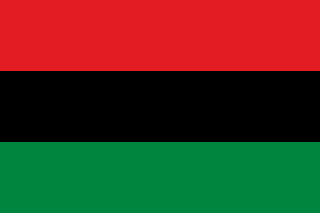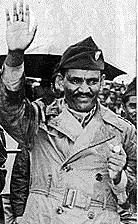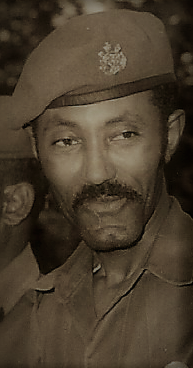History
Although the 1955 constitution guaranteed the right to form workers' associations, it was not until 1962 that the Ethiopian government issued the Labor the Relations Decree, which authorized trade unions. The next year, the imperial authorities recognized the CELU, which at the beginning represented twenty-two industrial labor groups. By 1973 the Confederation had 167 affiliates with approximately 80,000 members, which represented only about 30 percent of all eligible workers. [1] The CELU drew its membership from not only the railway workers, but included workers at the Addis Ababa Fiber Mills, Indo-Ethiopian Textiles, Wonji Sugar Plantation, Ethiopian Airlines and General Ethiopian Transport (also known as the Anbassa Bus Company). [2] The Ottaways note that the formation of a national labor organization, when only 27,000 people were employed in the manufacturing sector "was one of the paradoxes of Ethiopian politics at the time." They assert that the formation of CELU "can best be explained in terms of the country's foreign relations. A long time adherent to the International Labour Organization's charter, Emperor Haile Selassie apparently found it increasingly difficult not to respect it in practice, particularly at a time when he was trying to establish himself as a central figure in independent Africa." [3]
However, during the 1960s the CELU failed to exert a serious challenge to the economic status quo for a number of reasons. One was that most of the membership were "white collar workers in such organizations as banks, insurance companies and airlines" who had little in common with their industrial counterparts. As a result, the CELU "did not seriously attempt before the revolution to establish a minimum wage." [4] Other were flaws in the organization, which Edward Keller lists as including "corruption, embezzlement, election fraud, ethnic and regional discrimination, and insufficient finances. Seleshi Sisaye indicates that less than 40 percent of CELU's regular members paid dues. Annual revenues from dues averaged less than US$3,000. This forced CELU to rely on contributions from such international labor organizations as the International Confederation of Free Trade Unions, the All-African Labor Congress, and the International Labour Organization to finance its operations." [5] Further, when the CELU had attempted to flex its power in two general strikes in 1964 and 1970, both times it had failed to secure the necessary widespread support. [6] Despite these problems, the Ottaways note that when the Ethiopian Revolution erupted, "as the largest organization representing any of the new social groups and classes, it was a potential force to be reckoned with." [4] Rene Lefort observes that the Conferation "wanted to take advantage of the opportunity to increase the power of their organization. They launched a vast recruitment campaign (in two weeks the number of trade-union members rose by 40% to reach 120,000, according to CELU)". [7]
The CELU's role in the revolution came in March 1974. The Confederation presented to Prime Minister Endelkachew Makonnen a list of 16 demands, and warned that if the government did not satisfy these demands, they would call a general strike on 7 March; most of these demands specifically concerned labor issues, and only five addressed broader economic or political topics. The Endelkachew government delayed in responding to this list until the day before the general strike would occur, and then simply stated that each point would be answered in three to six months' time. "To its surprise, the general strike began the very next day," write the Ottaways. "With 85,000 to 100,000 workers participating, the country's main cities, particularly Addis Ababa, were paralyzed. But the CELU had no funds to sustain an unlimited strike, though they had promised one, and workers had no savings to fall back upon. By the third day, many were back on their jobs. The strike lasted long enough to force the Endelkachew government to sign an agreement, but not long enough to extract significant concessions." [8] Despite the lack of a decisive victory, this general strike inspired a series of wildcat strikes over the following weeks by the public employees of the different government bodies. [9] CELU also increased its membership in the months following the general strike by a third, although the Ottaways argue that this "shows how great was its past failure to fully organize the working class. [10]
Up to this time, the CELU was dominated by leaders like CELU President Beyene Solomon, who had been trained by American labor unions, saw the organization in purely economic terms and denied any intent to make it into a political force. But as the revolution progressed, these leaders were pushed aside by more radical members in the annual meeting in September 1974. Two factions vied for control, according to Rene Lefort: a much smaller one, led by Alem Abdi, which came to align itself with the Derg; and the majority faction, led by Marqos Hagos. [11] Four days after the deposition of Emperor Haile Selassie, on 16 September the CELU issued a communique condemning the Derg and demanding a civilian government, which led to the top three leaders of the CELU being arrested 24 September. [12] Lacking the direction of a relatively moderate leadership, by May 1975 the CELU was under the control of one faction which viciously opposed the Derg along Marxist lines. The Derg ordered the CELU headquarters closed and the organization reorganized on 19 May, but eventually backed down and allowed the headquarters to be reopened in the face of worker unrest. [13]
By the time of the general congress in Addis Ababa that September, the political makeover of the CELU was complete. "The socialist, even Maoist, language of its resolutions was unmistakable," note the Ottaways. "American-trained leaders had been replaced by more radical ones who embraced a far different ideology and concept of unionism. but, as would become apparent later, the new leadership was far ahead of, and cut off from, the bulk of the confederation's own rank and file." [14] According to Marxist theory, for the Ethiopian Revolution to be successful a vanguard party needed to be formed; the CELU, along with a number of civilian groups, opposed the Derg having control over the creation of this vanguard party. On 25 September, an Ethiopian Airlines employee was caught distributing CELU literature amongst airport workers, leading to a battle between workers and police which left four people dead and 22 wounded. The CELU leadership called for a general strike and went underground; the Derg placed the capital city under martial law on 30 September, and over the following month more than 1,500 civilians were arrested. The failure of the CELU to mount an effective protest destroyed its national organization, although individual unions survived, and a number of its leaders, including Marqos Hagos, joined the growing Ethiopian People's Revolutionary Party, which was becoming the primary opposition to the Derg [15] —and which became the principal target of the Red Terror.
Berhanu Beyeh is a Ethiopian former army officer and politician. He was Foreign Minister during the People's Democratic Republic of Ethiopia (1986–1989). Prior to that, he was chairman of the Derg's committee for legal affairs. Beyeh was a refugee resident of the Italian Embassy from May 1991 until December 2020, when he left the Embassy.

The Derg, officially the Provisional Military Administrative Council (PMAC), was the Marxist-Leninist military dictatorship that ruled Ethiopia, then including present-day Eritrea, from 1974 to 1987, when the military leadership or junta formally "civilianized" the administration but stayed in power until 1991.

LijEndelkachew Makonnen was an Ethiopian politician. Born in Addis Ababa, his father, Ras Betwoded Makonnen Endelkachew, served as Prime Minister of Ethiopia in the 1950s. Endelkachew Makonnen was a member of the aristocratic Addisge clan that were very influential in the later part of the Ethiopian monarchy. He would be the last Imperial Prime Minister appointed by Emperor Haile Selassie. He was a stepson of Princess Yeshashework Yilma, Emperor Haile Selassie's only niece.

Anarchism in Africa refers both to purported anarchic political organisation of some traditional African societies and to modern anarchist movements in Africa.

The All-Ethiopia Socialist Movement was a political party in Ethiopia. A Marxist-Leninist organization, MEISON played an active role in Ethiopian politics during the 1970s. Both it and the Ethiopian People's Revolutionary Party (EPRP) were enthusiastic supporters of the revolution that toppled Emperor Haile Selassie. However, as Mengistu Haile Mariam rose to power as leader of the ruling Derg government, conflict began to develop between the two groups. MEISON initially aligned itself with the Derg, but fell out with Mengistu as the Red Terror progressed and was repressed from mid-1977 onwards.

The Red Terror, also known as the Ethiopian Red Terror, was a violent political repression campaign of the Derg against other competing Marxist-Leninist groups in Ethiopia and present-day Eritrea from 1976 to 1978. The Qey Shibir was an attempt to consolidate Derg rule during the political instability after their overthrow of Emperor Haile Selassie in 1974 and the subsequent Ethiopian Civil War. The Qey Shibir was based on the Red Terror of the Russian Civil War, and most visibly took place after Mengistu Haile Mariam became chairman of the Derg on 3 February 1977. It is estimated that 10,000 to 980,000 people were killed over the course of the Qey Shibir.
The trade unions of Ethiopia have a total membership of approximately 300,000. Over 203,000 are members of the Confederation of Ethiopian Trade Unions (CETU).

Lieutenant Colonel Atnafu Abate was an Ethiopian military officer and a leading member of the Derg, the military junta which deposed Emperor Haile Selassie and ruled the country for several years.
The following lists events that happened during 1974 in Ethiopia.

Haile Fida was an Ethiopian politician and the leader of the All-Ethiopia Socialist Movement. His most significant accomplishment was drafting the Program for the National Democratic Revolution on behalf of the Derg.
Captain Alemayehu Haile was a member of the Derg, the military junta that ruled Ethiopia from 1974 to 1987.

Lieutenant Colonel Asrat Desta of Ethiopia was the Chairman of Information and Public Relation Committee of the PMAC of Ethiopia. He died on February 3, 1977, together with Head of State Brigadier General Tafari Benti and five other officers in a coup d'état carried out against them by Colonel Mengistu Haile Mariam.
Captain Mogus Wolde Mikael was an Eritrean military officer who was a member of the Derg, the military junta that ruled Ethiopia.
Democracia is the organ of the Ethiopian People's Revolutionary Party. It was launched as a clandestine weekly newspaper in July 1974, as the Central Committee of the Ethiopian People's Liberation Organization returned to Ethiopia from exile. At the time the EPRP was often known simply as the Democracia group, as the existence of the party was not publicly known.
Abyotawit Seded was a communist organization in Ethiopia, formed in 1976 by a group of officers of the Derg military junta who had attended political trainings in the Soviet Union from 1975 and onwards.
The Commission for Organizing the Party of the Working People of Ethiopia, generally known by its English acronym COPWE, was a political organization in Ethiopia during the rule of the Derg. COPWE was a preparty organization; it had the task of preparing the Ethiopian people for creation of a communist party. In the absence of a communist party, COPWE functioned as a temporary replacement of the party that it would create.
Alemu Abebe is an Ethiopian politician. He served as mayor of Addis Ababa during the years of Red Terror.
Alem Bekagn, or 'Kerchele Prison', was a central prison in Ethiopia until 2004. Located in Addis Ababa, the prison possibly existed as early as 1923, under the reign of Empress Zewditu, but became notorious after Second Italo-Ethiopian War as the site where Ethiopian intellectuals were detained and killed by Italian Fascists in the Yekatit 12 massacre. After the restoration of Emperor Haile Selassie, the prison remained in use to house Eritrean nationalists and those involved in the Woyane rebellion. Under the Communist Derg regime that followed, the prison was the site of another mass killing, the Massacre of the Sixty, and of the torture and execution of rival groups in the Red Terror. The prison remained a site of human rights abuses until the Ethiopian People’s Revolutionary Democratic Front entered Addis Ababa on 28 May 1991, after which it became a normal prison. The prison was closed in 2004 and demolished in 2007 to allow the construction of the headquarters of the African Union.

The following is history of the Red Terror in Ethiopia, a political repression launched by the military junta Derg from 1976 to 1978, which resulted in more than 10,000 deaths.
This is chronology of the Ethiopian Revolution that took place from 12 January to 12 September 1974 in the Ethiopian Empire.








